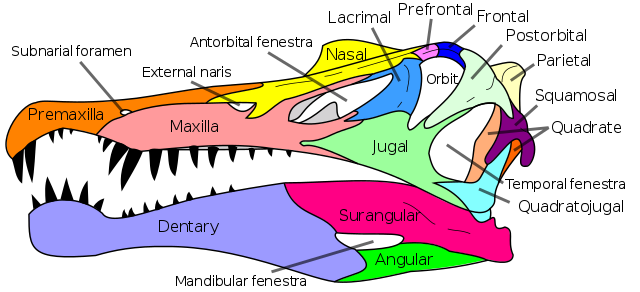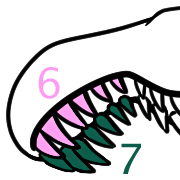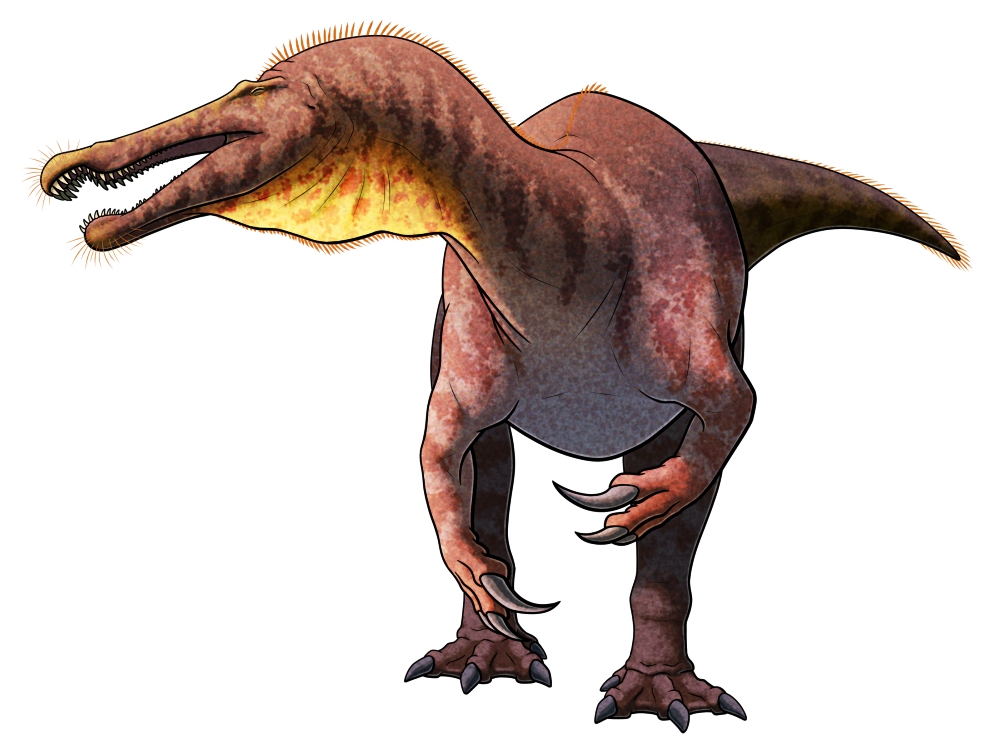Almost all toothed theropod dinosaurs had exactly four teeth on each of their premaxillary bones, the paired bones at the very tip of the upper snout.

The semi-aquatic spinosaurids were an unusual exception to this with six or seven teeth per premaxilla – and one particular member of this lineage seems to have been just a little bit weirder.
Baryonyx walkeri lived during the early Cretaceous, around 130-125 million years ago, in what is now southeast England. About 9m long (~30′), it had distinctive enlarged curving claws on the first fingers of its hands, along with a long narrow snout with a “rosette” at the tip followed by a notch (a shape convergent with the jaws of modern pike conger eels).
And that premaxillary rosette had a strangely asymmetrical arrangement of teeth.

The left side had six teeth, and the right side had seven.
Why? We don’t know!
Baryonyx skull material is rare and fragmentary, so it’s unclear if this was actually a characteristic feature of the species or if the known asymmetric rosette just represents an unusual individual.

